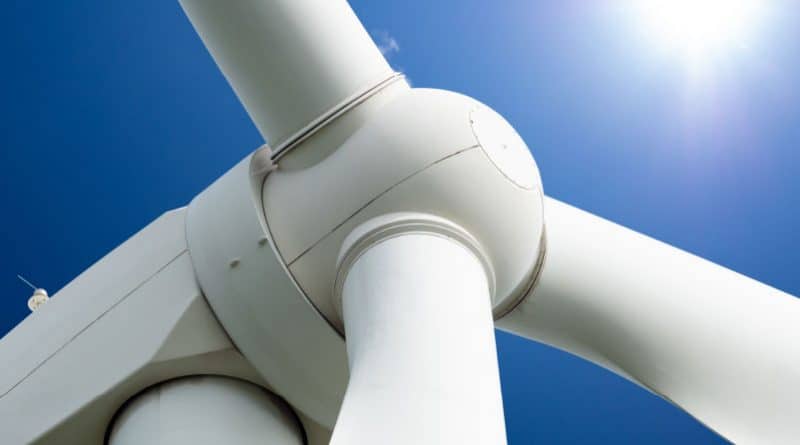Planning application submitted for Ireland’s largest offshore wind park
Codling Wind Park, Ireland’s largest Phase 11 offshore renewable energy project will submit its planning application to An Bord Pleanála early next week. A planning notice for the project is being published in local papers in Wicklow and Dublin and will be included in a national newspapers.
The owners – the project is a 50/50 joint venture between Fred. Olsen Seawind and EDF Renewables – believe the application marks a significant milestone not just for Codling Wind Park but for the development of Ireland’s offshore renewable sector and national climate policy.
Codling Wind Park will have a capacity of up to 1,300 megawatts (MW) and will be able to supply over 1 million Irish homes with clean renewable energy.2 It will be located between 13 to 22km off the Wicklow coast and will connect to the Irish grid at Poolbeg in Dublin.
The project will also reduce Irish energy generation emissions and displace over 1.7 million tonnes of carbon.3 The project alone accounts for just over one quarter of Ireland’s entire 2030 target for grid connected offshore energy.
Project Director of Codling Wind Park, Scott Sutherland said the application was the product of over fifteen years of data gathering and site investigations, both onshore and offshore, which included geophysical, aerial and vessel-based surveys.
“This is a big moment for climate action, for Irish energy independence and for the local communities who will share in the benefits of the project. This is one of the largest energy infrastructure investments ever seen in Ireland and a tremendously exciting project to work on. We are very confident in our application which is informed by detailed surveys, studies and assessments of the local environment and consultation with stakeholders, which aligns with the highest Irish and international standards of environmental assessment and planning.”
“The project that is being put forward for planning strikes the right balance between environmental considerations and technical feasibility, as well as different environmental constraints. The application takes a conservative and comprehensive account of a broad range of considerations including the local seabed and tidal conditions, visual landscapes and seascapes, geology, archaeology, marine life, ornithology and protected sites.”
“The application is the culmination of years of hard work by the project team and we look forward to progressing it through the planning system, and then delivering the full range of economic and environmental benefits that the project will bring for Ireland, for climate change and for people locally”.
Upon receiving a positive planning outcome, Codling Wind Park would move forward to construction and start generating power by 2030. The project is predicted to create over 1,000 jobs during construction and approximately 75 long term operations and maintenance roles.
Earlier this year the project announced a further c. 25% reduction in the number of wind turbines which would be required to deliver the project. While the original estimate for the number of turbines required was 420, this was later reduced to 100. In April the project confirmed that the maximum number of turbines would be 75. Codling Wind Park said the project design was informed by advances in technology and an extensive public consultation and engagement process which has been conducted over the last two years.
Subject to planning permission and all other necessary permits and consents being received, Codling Wind Park could begin construction in 2026-27. Construction is expected to take two to three years to complete.
The application’s key design elements include:
- Two design options for the wind array to be located on Codling Bank, a raised area of seabed between 13 and 22 km off the Wicklow coast (between Greystones and Wicklow town).
(i) Design option A – 60 turbines @ 314 metres tip height
(ii) Design option B – 75 turbines @ 288 metres tip height
- Inter array cables connecting the turbines with three offshore substations located within the wind farm array area.
- Three underwater export cables – circa 40 – 50 Kms – connecting the offshore substations to landfall on the Poolbeg peninsula in Dublin Bay.
- An onshore substation and grid connection cables which will be located on the Poolbeg peninsula. This 220kv substation will be built on a site adjacent to Pigeon House Harbour, on the west side of the peninsula. The substation will prepare the electricity to the appropriate specifications for delivery to EirGrid’s substation at Poolbeg and thence to the national grid.
In addition to accessing planning documents online, copies of the application and all supporting documents can also be viewed for a period of eight weeks commencing on 23 September, 2024, at the following office locations:
- The Offices of An Bord Pleanála, 64 Marlborough Street, Dublin 1, D01 V902
- Dún Laoghaire Rathdown County Council, 2 Marine Road, Dún Laoghaire, A96 K6C9
- Dublin City Council, Civic Offices, Wood Quay, Dublin 8, D08 RF3F
- The Offices of Wicklow County Council, County Buildings, Whitegates, Wicklow Town, A67 FW96.
1 In May 2020 the Government designated six offshore wind projects which had been in development for some time as ‘Relevant Projects’ in the context of the Maritime Area Planning Bill which was then being developed and is now enacted. These projects – including Codling Wind Park – are now called Phase One projects and will be prioritised through the new offshore consenting, grid and ORESS regimes in order to contribute to the delivery the Government target of 5GW of grid connected offshore wind by 2030. 2Figures calculated using SEAI data. 3Figures calculated using SEAI data.
Follow Irish building magazine on LinkedIn for the latest news and updates.

